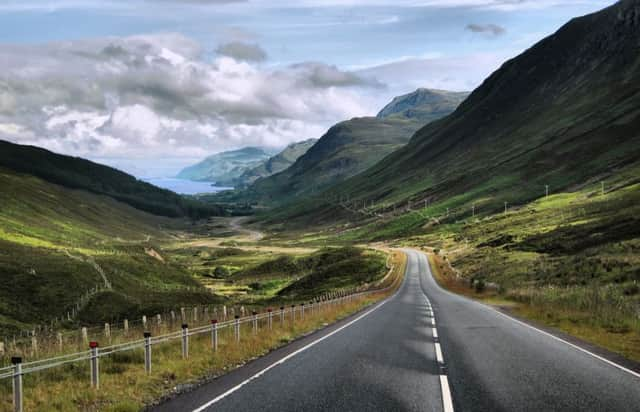Concern over environmental impact of North Coast 500 route


But now one of Scotland’s leading outdoor experts has raised concerns that the North Coast 500 campaign is damaging the environment and sending out the wrong message over tackling climate change.
Cameron McNeish, the award-winning writer and broadcaster, has questioned why tourism bodies have thrown their weight behind a campaign encouraging people to drive “petrol and diesel fuelled vehicles for 500 miles around the north of Scotland.”
Advertisement
Hide AdAdvertisement
Hide AdMcNeish, who has written more than 20 books, has spoken out less than three years after then First Minister Alex Salmond helped him launching a new Scottish National Trail that he devised.
McNeish has suggested that visitors should be encouraged to walk, cycle or ride a horse rather than drive through some of Scotland’s most remote wilderness areas.
The campaign was hailed as “the ultimate 500 mile journey” by VisitScotland when it was launched in March 2015 to try to create a new tourism product that the whole of the North Highlands could benefit from. It has since been cited as one of the world’s best road trips by the likes of CNN and Conde Nast Traveller.
The 516-mile route, which takes motorists through Wester Ross, Sutherland, Caithness and Inverness-shire, would take 129 hours to complete on foot, based on an average pace of 15 minutes per mile.
McNeish said: “Should we really be promoting the idea of people driving petrol and diesel fuelled vehicles for 500 miles around the north of Scotland?
“Shouldn’t we be encouraging people to come to Scotland to walk or cycle or ride a horse instead? For a country whose government is so concerned with renewable energy and climate change is it not hypocritical for its tourism body to support such a way of seeing Scotland?”
The North Coast 500 campaign, which is billed as Scotland’s answer to Route 66 in the United States, is thought to have generated an extra £9 million for the Highlands since its launch.
However a study for Highlands and Islands Enterprise highlighted a number of issues, including the “accelerated deterioration” of road surfaces and verges, “poor or inexperienced driver behaviour”, pressured on car parks in towns, villages and viewing points, and increased instances of speeding.
Advertisement
Hide AdAdvertisement
Hide AdIt recently emerged that there had been a 45 increase in the number of deaths and accidents on the roads that make up the North Coast 500 since the campaign was launched.
John Finnie, Green MSP for the Highlands and Islands, said: “Tourism is vital for the Highlands and it’s easy to understand why there’s been a surge in visitors wanting to explore our stunning scenery. However it’s clear this rapid rise in visitor numbers wasn’t fully anticipated. To address this, and the environmental concerns Cameron McNeish raises, the Scottish Government should consider an earlier roll out of electric car charge points in the region.
“It is important we recognise who the beneficiaries of this heavy promotion are and that the rapid rise in tourist numbers has left a number of communities feeling swamped.”
Chris Taylor, VisitScotland’s regional partnerships director for the Highlands, said: “While we encourage prospective visitors to enjoy Scotland’s spectacular driving routes, we also actively promote cycling as well as encourage people to go on walks.
“We have a good track record in encouraging good practice through our Green Tourism Scheme and more broadly through our work on inclusion and accessible tourism.
“We also work closely with major transport providers to encourage and support opportunities for visitors to explore Scotland by public transport.”
A spokeswoman for the North Coast 500 campaign said: “We believe the wild landscape of the North Highlands should be accessible to everyone. While exploring the North Coast 500 we would encourage people to experience the terrain by foot, bike or horse, but as any walker or climber familiar with the area will know, access to our most remote areas still requires a motor vehicle.”